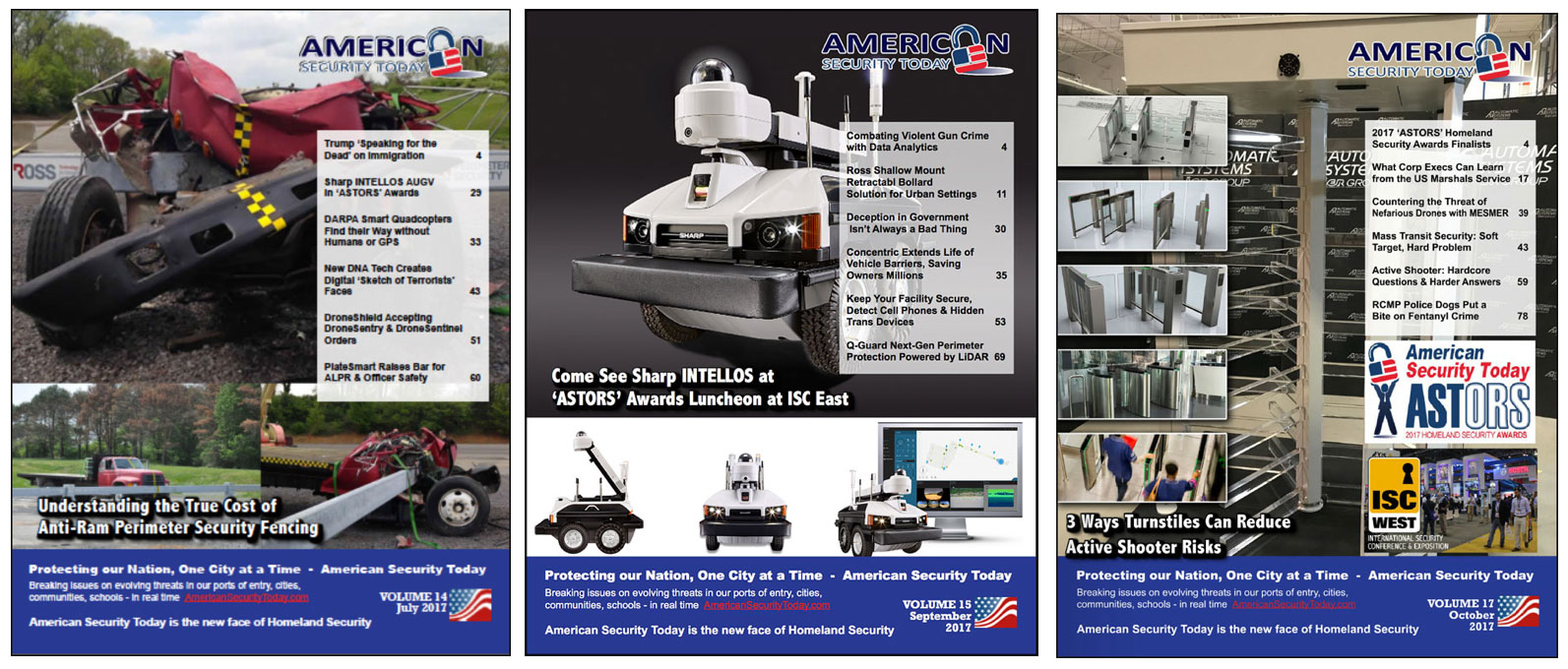
The types of shoes you wear when flying matter. And not just shoe types.
Size, material, soles and heels are also very important.
Why? Shoes can become dangerous vehicles for terrorists’ plots.
On December 22, 2001, three months after the terrorist attack on the World Trade Center, Richard Reid attempted to light a fuse in his shoe onboard an American Airlines flight from Paris to Miami.
(If in fact ISIS brought down Metrojet Flight 9268 it would be a terrifying success in a long string of failures to bomb planes. Courtesy of CNN and YouTube. Posted on Nov 4, 2015.)
Luckily, nearby passengers and crew noticed and subdued him. FBI experts later found explosives in his shoes.
“This was ultimately the reason why now people have to take their shoes off at airport security checkpoints,” said John Fortune, Program Manager for the 2017 ‘ASTORS’ Homeland Security Awards Program at the Department of Homeland Security (DHS) Science and Technology Directorate’s (S&T) Apex Screening at Speed (SaS) Program.
DHS wants to prevent future incidents. That is why S&T is working on a millimeter wave technology for screening shoes as part of the larger Screening at Speed Program.
The program, which started in 2016, is pursuing transformative research and development activities that support a future vision for increasing security effectiveness while dramatically reducing wait times and improving the passenger experience.
“We are looking for a two-fold benefit – to improve detection of current and emerging threats to aviation and to improve the passenger experience in the airport,” said Fortune.
Similar to the full-body scanners at the airports, which also use the harmless millimeter waves, shoe scanners will be looking for concealed threats.
(Every day, the Transportation Security Administration (TSA) screens about 1.8 million passengers, along with all of their luggage. Those searches produce a lot of interesting results. From animals to weapons, security officials have to be on their guard for the strange, out of the ordinary and occasionally disturbing items passengers try and take on a plane. Here are the 5 craziest things Found By Airport Security! Courtesy of the MAGNUM.)
However, knowledge on the types of shoes airline passengers wear when traveling is lacking.
For high-quality results and successful integration at Transportation Security Administration (TSA) checkpoints, the Screening at Speed team and its partner Pacific Northwestern National Laboratory needed additional data – data on the types of shoes passengers wear so that they could create more effective algorithms for the shoe scanner.
They also needed to find the best place for the shoe scanner in existing checkpoints.
Fortune asked S&T sociology expert Dr. Kathleen Deloughery to conduct a study in seven airports across the U.S. on the types of footwear passengers wear.
The study took place in September and October 2018.
The shoe study
Preliminary research showed about three quarters of travelers do not have a TSA Pre✓® or similar program that would allow them expedited screening, which lets passengers keep their shoes on.

Deloughery’s team also researched many websites of shoe manufacturers and looked for marketing studies.
“One, there weren’t any great studies and two, we were concerned from the get-go that the shoes people wear when flying might not match up to the shoes they wear in their everyday life,” said Deloughery.
“So we decided that it is best to go out and look at the travelers to get the right idea.”
Deloughery with the help of Research Triangle Institute (RTI) International developed a checklist for recording shoe size and style, sole thickness and material, and heel height and thickness.
The researchers gathered data at seven representative airports in publicly accessible areas where people queue up to go through the security lines.
To ensure coverage of styles worn by business and leisure travelers, data was collected across three time periods (morning, afternoon, evening) and two days of the week (business days and weekends).
In all the team described a total of 4,200 pairs of shoes.
“TSA helped us select regions that represent regional differences in the types of shoes people wear,” said Deloughery.
“We also wanted to make sure that we hit both warm and cold weather airports. We were able to see people wearing boots in Philly and Chicago.”
Becoming part of the screening process
Deloughery’s team also conducted 15-minute interviews with TSA personnel about shoe scanners becoming part of the passenger screening process.
The researchers asked how the new technology can be implemented and what potential issues may arise. TSA’s input can improve the design of the shoe scanner.
“One of the great things I have discovered from working with TSA in the past, is that airports are super excited to be involved in S&T research,” said Deloughery.
To determine the best design and place for the shoe scanner at airport security checkpoints, S&T relies on TSA’s input and advice.

“During the interviews with TSA employees, some asked if we can put the shoe scanner inside the full-body scanner or at the documents checkpoints where you show your passport and boarding pass,” Deloughery said.
“It will probably be like a mat that you step on for about two to five seconds.”
Deloughery envisions a screening process where passengers stand on the shoe scanner for a few seconds.
If an alarm sounds, a TSA officer will ask the traveler to remove his shoes and put them through an X-ray scanner, as is the procedure now.
But S&T wants to make the number of shoes that goes through X-ray as small as possible.
Thanks to the shoe study, S&T can better select which shoes to test to determine those that can be successfully screened by the prototype and which ones are challenging – for example, due to certain types of materials.
“The shoe scanners would be scanning for anything that shouldn’t be in your shoes,” Fortune said.
“There is usually a serious reason for someone to modify a shoe to secretly accommodate materials or items not allowed on airplanes.”

When can we stop taking our shoes off?
Currently a prototype is being built, which should be completed in 2019 and later tested at an airport.
S&T may further perfect the technology and then transition it to a commercial manufacturer for integration in existing scanning systems.
“One of the cool things is the valuable partnership between our technical design team and understanding the human factor side of how the technology is going to work, because if we don’t consider the shoes people are actually wearing, we may end up with a machine that is incapable of scanning many of the shoes encountered when passengers reach the security checkpoint,” said Fortune.
“We are trying to make sure we design technology that is most effective against real threats.
DHS Science and Technology Directorate (S&T) Honored in the 2018 ‘ASTORS’ Homeland Security Awards Program
-
‘Excellence in Homeland Security’
-
Android Team Awareness Kit (ATAK)
-
‘Excellence in Homeland Security’
-
Enhanced Dynamic Geo-Social Environ (EDGE) Virtual Online Training for First Responders
-
‘Excellence in Homeland Security’
-
Flood Apex Program Flood Sensors
-
*DHS S&T is also a 2017 ‘ASTORS’ Award Winner
The Annual ‘ASTORS’ Awards Program is specifically designed to honor distinguished government and vendor solutions that deliver enhanced value, benefit and intelligence to end users in a variety of government, homeland security and public safety vertical markets.
The 2018 ‘ASTORS’ Awards Program drew an overwhelming response from industry leaders with a record high number of corporate and government nominations received, as well as record breaking ‘ASTORS’ Presentation Luncheon Attendees, with top firms trying to register for the exclusive high – end luncheon and networking opportunity – right up to the event kickoff on Wednesday afternoon, at the ISC East registration!
Over 130 distinguished guests representing National, State and Local Governments, and Industry Leading Corporate Firms, gathered from across North America, Europe and the Middle East to be honored among their peers in their respective fields which included:
- The Department of Homeland Security
- The Federal Protective Service (FPS)
- Argonne National Laboratory
- The Department of Homeland Security
- The Department of Justice
- The Security Exchange Commission Office of Personnel Management
- U.S. Customs and Border Protection
- Viasat, Hanwha Techwin, Lenel, Konica Minolta Business Solutions, Verint, Canon U.S.A., BriefCam, Pivot3, Milestone Systems, Allied Universal, Ameristar Perimeter Security and More!
The Annual ‘ASTORS’ Awards is the preeminent U.S. Homeland Security Awards Program highlighting the most cutting-edge and forward-thinking security solutions coming onto the market today, to ensure our readers have the information they need to stay ahead of the competition, and keep our Nation safe – one facility, street, and city at a time.
The 2019 ‘ASTORS’ Homeland Security Awards Program is Proudly Sponsored by ATI Systems, Attivo Networks, Automatic Systems, and Desktop Alert.
Nominations are now being accepted for the 2019 ‘ASTORS’ Homeland Security Awards at https://americansecuritytoday.com/ast-awards/.
Comprehensive List of Categories Include:
| Access Control/ Identification | Personal/Protective Equipment | Law Enforcement Counter Terrorism |
| Perimeter Barrier/ Deterrent System | Interagency Interdiction Operation | Cloud Computing/Storage Solution |
| Facial/IRIS Recognition | Body Worn Video Product | Cyber Security |
| Video Surveillance/VMS | Mobile Technology | Anti-Malware |
| Audio Analytics | Disaster Preparedness | ID Management |
| Thermal/Infrared Camera | Mass Notification System | Fire & Safety |
| Metal/Weapon Detection | Rescue Operations | Critical Infrastructure |
| License Plate Recognition | Detection Products | And Many Others! |
Don’t see a Direct Hit for your Product, Agency or Organization?
Submit your category recommendation for consideration to Michael Madsen, AST Publisher at: mmadsen@americansecuritytoday.com.
2018 Champions Edition
 See the 2018 ‘ASTORS’ Champions Edition – ‘Best Products of 2018 ‘ Year in Review’ for in-depth coverage of the outstanding products and services of firms receiving American Security Today’s 2018‘ASTORS’ Homeland Security Awards.’
See the 2018 ‘ASTORS’ Champions Edition – ‘Best Products of 2018 ‘ Year in Review’ for in-depth coverage of the outstanding products and services of firms receiving American Security Today’s 2018‘ASTORS’ Homeland Security Awards.’
Enter Early to Maximize Media Coverage of your Products and Services at Kickoff, and Get the Recognition Your Organization Deserves!
And be sure to Register Early for the 2019 ‘ASTORS’ Awards Presentation Luncheon at ISC East 2019 to ensure your place at this limited- space event!

2018 ‘ASTORS’ Homeland Security Awards Luncheon at ISC East






















